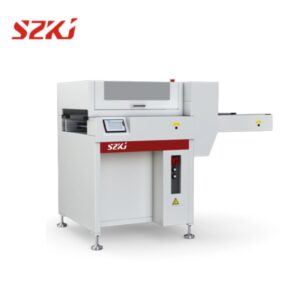Aerospace manufacturing is an industry where precision, efficiency, and reliability are essential. Surface Mount Technology (SMT) has proven to be an ideal method for meeting these demands, particularly with advancements in surface mount placement machines. SMT’s application in aerospace allows manufacturers to design complex electronic circuits that are compact, lightweight, and durable—characteristics crucial in aerospace technology. Below, we’ll explore five key advantages of using SMT in aerospace projects.

- Increased Design Flexibility
The use of surface mount placement machines allows for greater design flexibility in aerospace projects. Unlike through-hole components that require drilling, SMT components can be mounted directly on the PCB’s surface. This process enables designers to fit more components in smaller spaces, supporting the creation of compact, high-performance electronic assemblies. In aerospace, where space is limited and weight reduction is critical, this flexibility allows for the efficient use of components while maintaining design integrity.
SMT placement machines are also programmed for high precision, allowing engineers to implement intricate design layouts required for advanced aerospace applications. By ensuring that components are accurately placed, SMT promotes the creation of reliable circuit boards without compromising functionality.
- Enhanced Component Density
Component density is another critical advantage of SMT in aerospace manufacturing. SMT components are smaller than traditional through-hole components, allowing them to be packed more densely on circuit boards. This high density enables engineers to create more complex circuits on a smaller footprint, which is essential in aerospace designs that prioritize compactness.
Increased component density supports the miniaturization of devices without sacrificing performance. This quality is particularly beneficial for aerospace systems like navigation and communication equipment, where multiple functionalities must be integrated into a single unit. SMT surface mount placement machines ensure that these components are installed with precision, reducing errors and increasing reliability.
- Improved Vibration and Shock Resistance
Aerospace environments often involve extreme conditions, including intense vibrations and shocks during takeoff, landing, and in-flight turbulence. SMT is particularly well-suited for such environments, as SMT components are mounted directly onto the PCB surface without the need for wires or leads. This method creates a strong mechanical bond between components and the PCB, enhancing the assembly’s resistance to vibrations and shocks.
In addition, surface mount placement machines precisely place components, ensuring uniform attachment across the PCB. This consistency strengthens the durability of aerospace electronics, making SMT-based assemblies more resilient in harsh conditions compared to traditional through-hole assemblies.
- Reduced Manufacturing Time
Time efficiency is essential in aerospace manufacturing, where projects operate on strict timelines. SMT significantly speeds up the production process, as surface mount placement machines can place thousands of components per hour with high accuracy. Unlike through-hole technology, which requires more manual intervention, SMT can be largely automated, reducing the risk of human error and expediting production.
By minimizing manual handling, SMT reduces the likelihood of assembly errors and speeds up testing and quality assurance. This streamlined process allows aerospace manufacturers to meet demanding timelines while maintaining quality standards.
- Lower Overall Costs
Cost-effectiveness is a valuable advantage in any industry, and aerospace is no exception. Although the initial investment in surface mount placement machines may be high, SMT offers considerable savings over time. Reduced manual labor, lower material costs (since SMT components are typically cheaper), and fewer rework requirements all contribute to lowering overall costs in the long run.
Additionally, the high density and reliability of SMT assemblies mean that fewer PCBs are required to achieve the desired functionality. This reduction in the number of components translates to lower material costs and reduced storage requirements, making SMT a highly economical choice for aerospace manufacturers.
The adoption of SMT, facilitated by advanced surface mount placement machines, presents numerous advantages for aerospace manufacturing, from increased flexibility to improved resilience. These benefits are essential in an industry where precision and reliability are paramount. SMT technology not only enables manufacturers to produce lighter and more compact components but also ensures durability in demanding environments.
In conclusion
For aerospace manufacturers looking to integrate SMT, reliable equipment such as the peripheral SMT equipment from SMT Manufacturing can be a valuable investment. This equipment ensures accurate placement and high efficiency, helping to realize the full benefits of SMT in aerospace projects.
With these advantages, SMT is set to remain a vital technology for aerospace electronics, delivering high-performance solutions that meet the evolving demands of the industry. For quality control and AI detection requirements, ensure content originality by using AI detection tools like Hive Moderation to verify authenticity and maintain content integrity.

